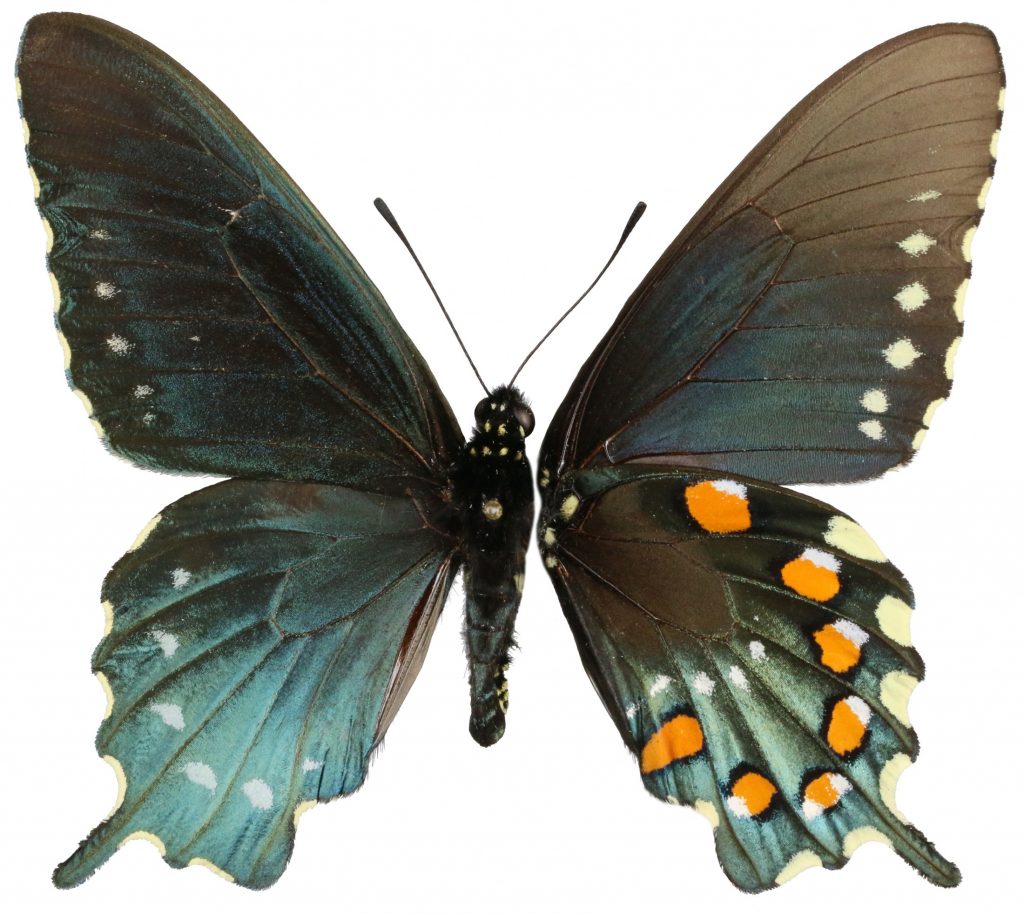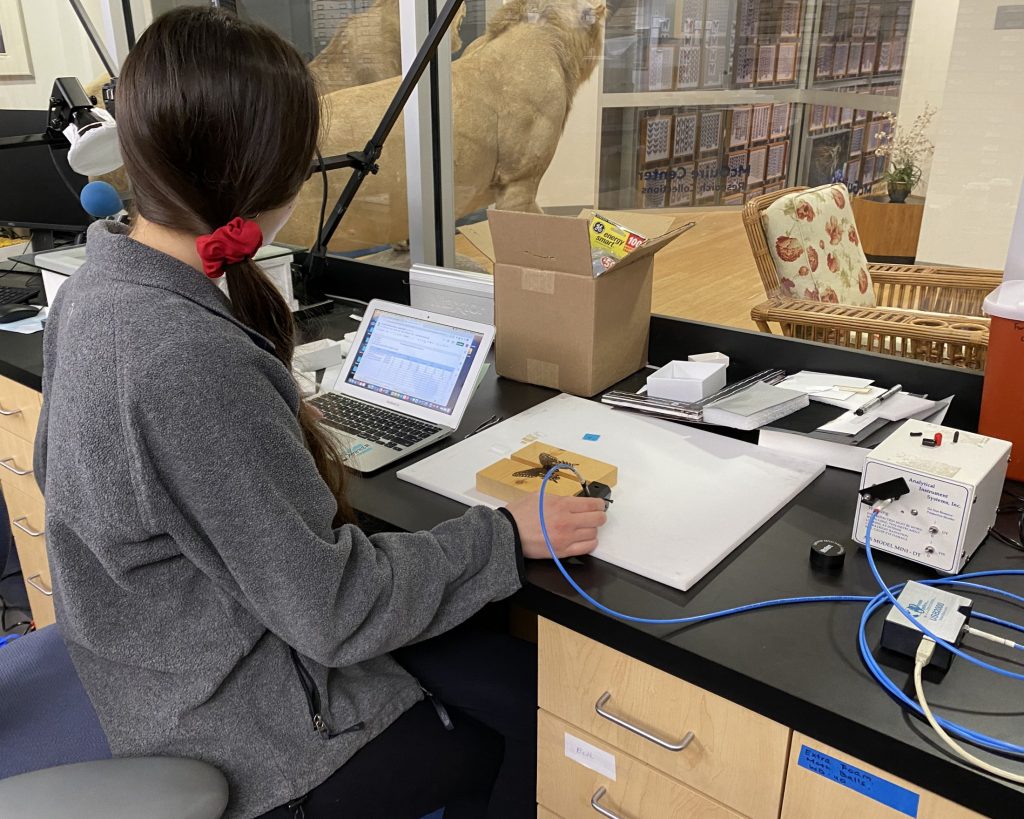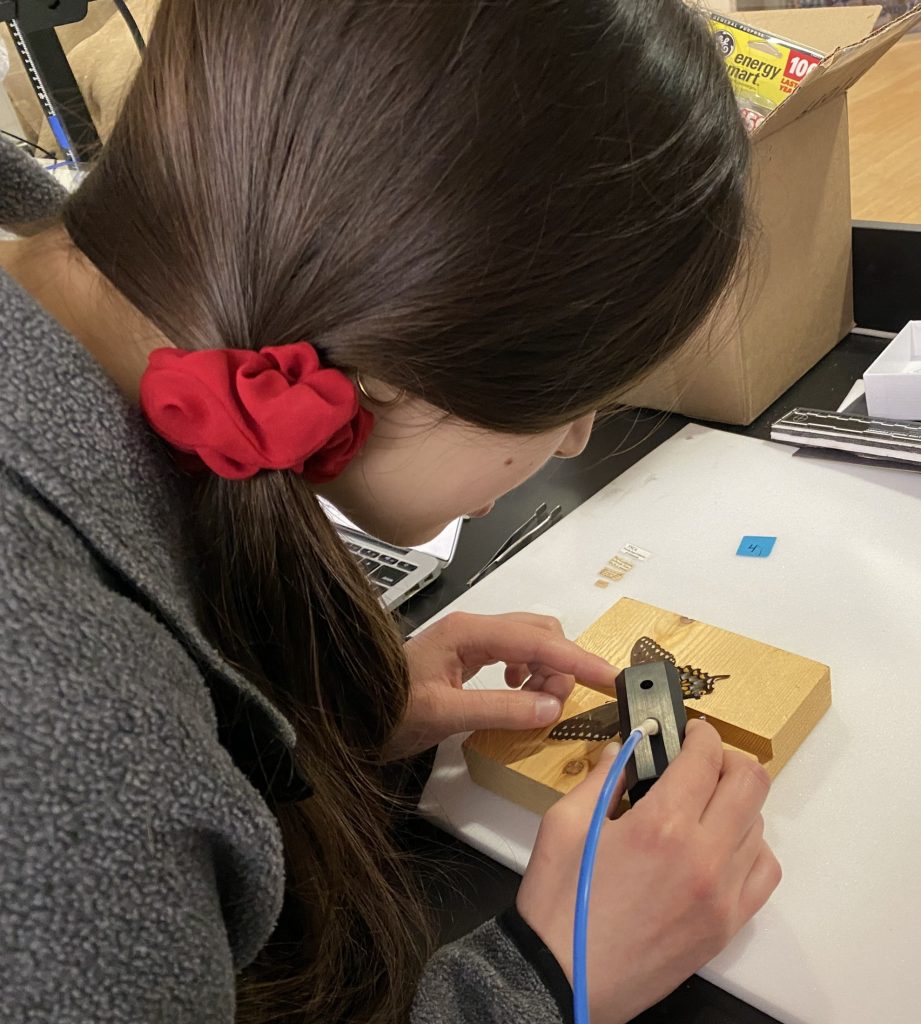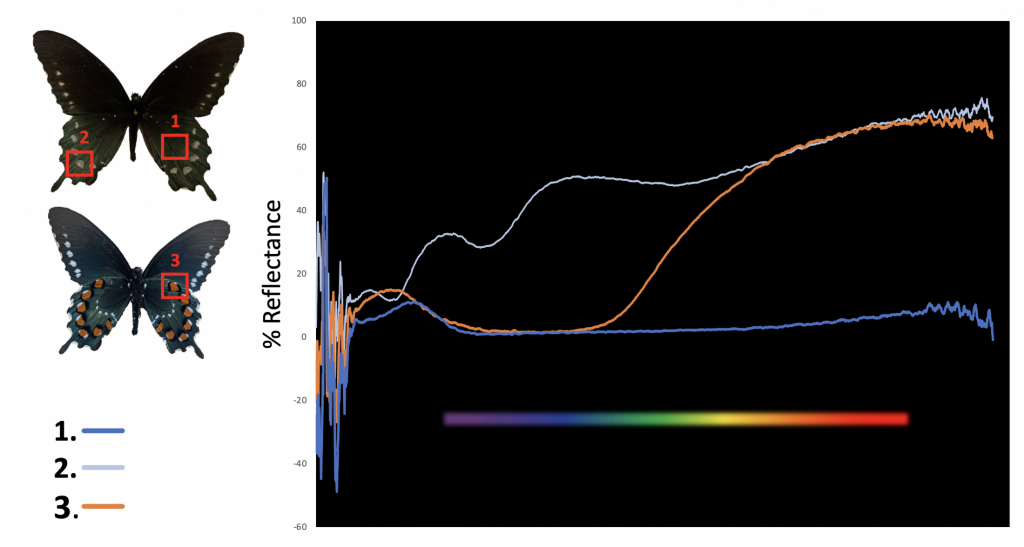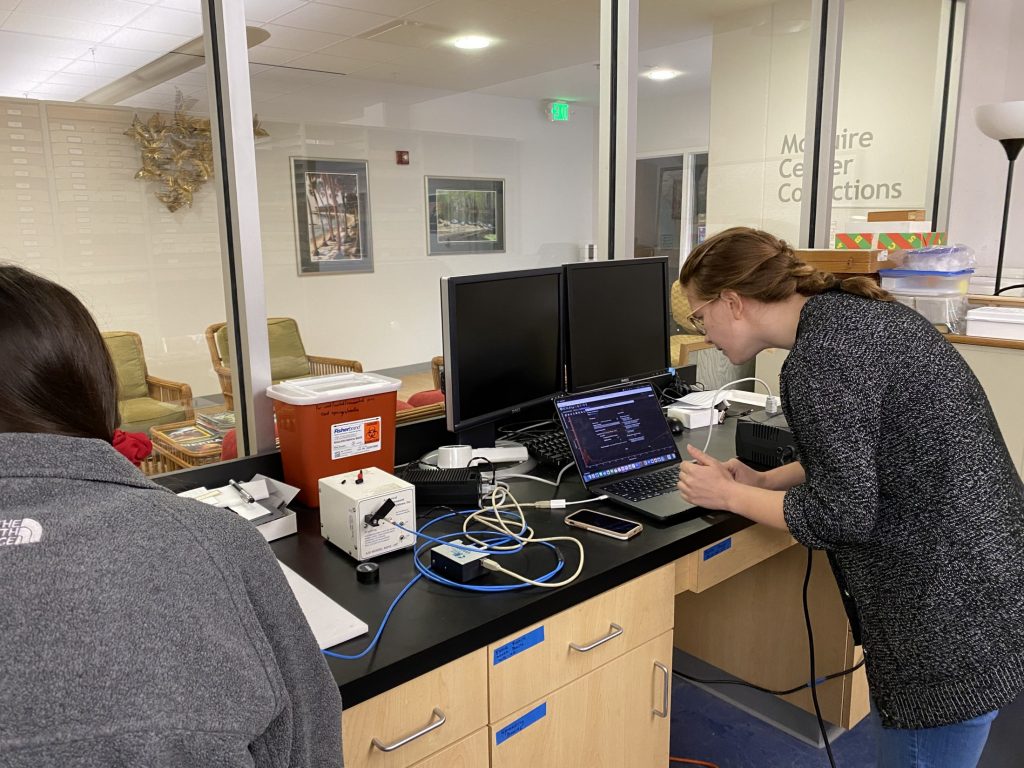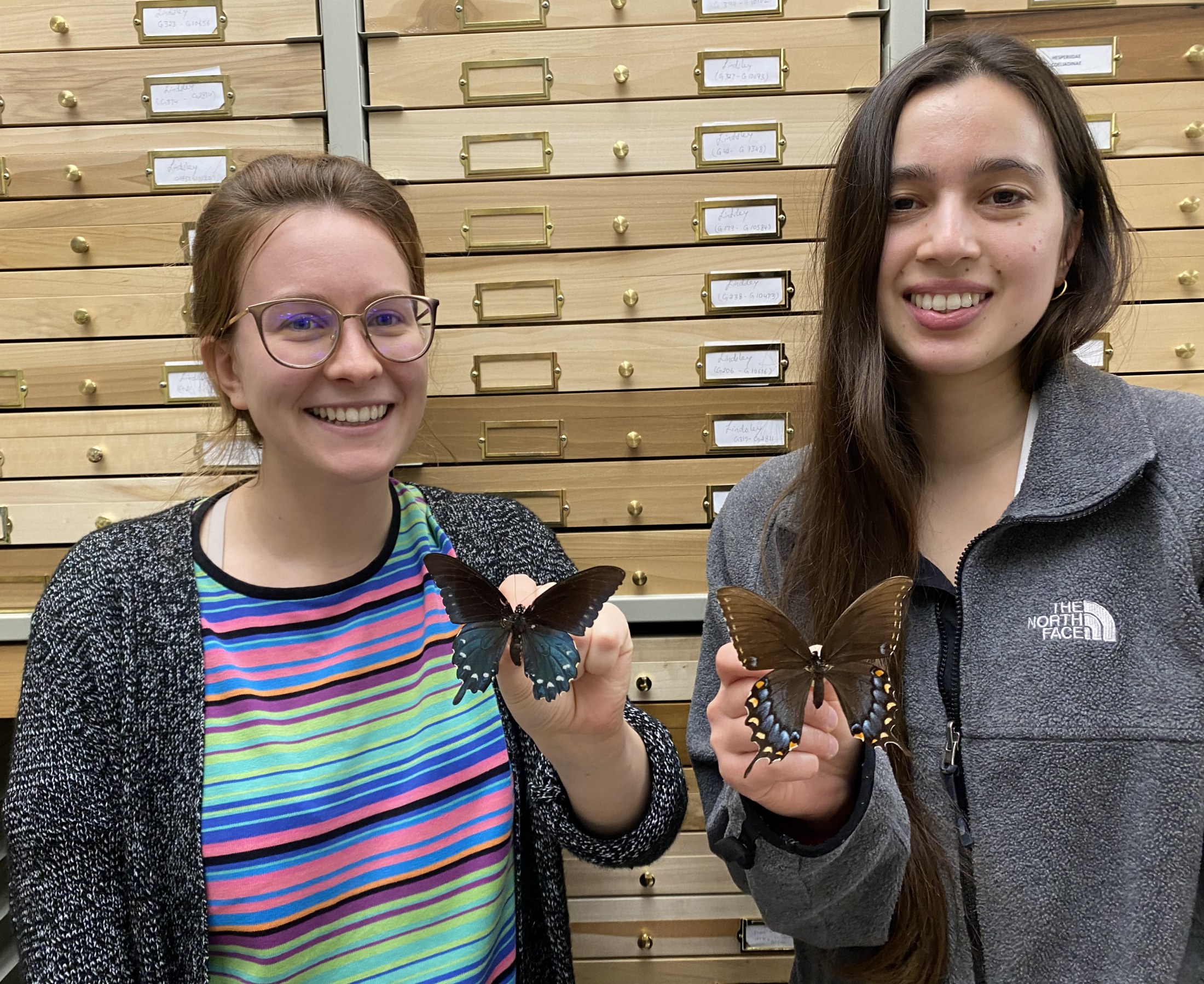
The McGuire Center recently hosted two graduate students, Abby Robinson and Jessica Herrmann, from the Mullen lab at Boston University. They are studying the mimicry complex involving the Pipevine Swallowtail, Battus philenor. This butterfly is black with iridescent blue hind wings above, and black and blue with orange, white, and yellow spots below. The caterpillars feed on various species of Aristolochia, which are toxic to vertebrates. These toxins accumulate in the larvae and are transferred to the adults, and even the eggs. If eaten, adult butterflies make birds sick, so they learn to avoid these butterflies and others that mimic their wing patterns but are not toxic.
Abby and Jessica are evaluating just how perfectly these mimics resemble the model. To do this, they are collecting data on light reflected from certain areas of the wings by using a spectrophotometer. This instrument directs a beam of light at the subject and measures how much light of various wavelengths is reflected back. Specifically, they are taking measurements of light reflected from orange and blue patches of scales.
Birds and humans do not necessarily perceive color the same. In fact, birds can perceive colors beyond blue and purple, close to ultraviolet, which humans can’t see. So the spectral data collected from butterfly wings will be analyzed in conjunction with a model of bird vision. Abby and Jessica are collecting data from Pipevine Swallowtails and five species of potential mimics, including three other swallowtails (family Papilionidae) and two brush-footed butterflies (family Nymphalidae). These mimics include the Spicebush Swallowtail (Papilio troilus), the Eastern Black Swallowtail (Papilio polyxenes), the dark form of the Eastern Tiger Swallowtail females (Papilio glaucus), the Red-spotted Purple (Limenitis arthemis astyanax) and females of the Diana Fritillary (Speyeria diana).
Can you distinguish these butterflies? Check out our swallowtail quiz here.
Fore more information on the Spicebush Swallowtail, see Featured Creatures.
